Adaptive Leadership for Preachers (Part 4): 10 Steps to Lead Creatively, Effectively, and Pastorally (A Guest Post)
Over three decades, Dale Matherly has successfully led faith communities and not-for-profits in retiring debt, reorganizing governance structures, and developing leaders who transform their communities. Known as a leader, coach, mentor, and facilitator, Dale is frequently invited to help others realize their aspirations through speaking, teaching, and coaching.
Dale earned a M.A. in Christianity and Judaism in Antiquity from the University of Notre Dame, a M.Div. from Emory University, and a B.A. in history from Centre College, certificates as a Leadership Coach and Teach Leadership from Kansas Leadership Center, and ordination in the Christian Church (Disciples of Christ).
This post is Part 4 of a four-part series. You can read the first part here, the second here, and the third here.
To preach is to lead.
Preachers lead by proclaiming how, where, when, and why the gospel influences and guides our hearts, decisions, and actions, individually and corporately.
The need for preachers to lead their congregations through change is always difficult, but perhaps it has never been more difficult than it is now.
Given the extreme changes we’ve faced together recently and still have ahead of us—including the pandemic, calls for racial justice, climate change, the threat to democracy, Christian nationalism, and inflation—it may be that we, as preachers, have never needed the skills to lead through change more than we do now.
Today’s guest post by Backstory Preaching Mentor and Leadership Coach, the Rev’d Dale Matherly, offers ten steps we can apply to lead faithfully, authentically, and skillfully. —Lisa Cressman, BsP Founder & Steward
Adaptive leadership is not linear. It’s dynamic.
You learn and adapt and then learn and adapt—and the process continues.
You can engage these 10 steps in any order that makes sense to you or as they arise in your context.
Doing this work with partners in your organization, with colleagues in similar contexts, and with a leadership coach can facilitate your response to adaptive challenges in your context.
1. Get up on the balcony
Get yourself “above” the details and minutiae to see the bigger picture.
Consider your congregation’s mission. Reflect on your long-term objectives. Think about challenging people or circumstances in light of your entire ministry.
This strategy enlarges your perspective so you can see how the dance is unfolding in its entirety.
Build balcony time in to your weekly schedule.
The regular practice builds your muscle capacity and helps integrate the wide angle and the close up views.
2. Engage Unusual Voices
Who are the people you do not usually seek input from? Maybe they are part of the quiet mass, or maybe they are often the contrarian voice in the discussion.
Sit down with them over coffee or lunch.
Ask for their perspective. Just listen and ask questions.
3. Identify Your Comfort Zone
Your comfort zone is where you operate without having to think too much about the work.
It is defined by skills you have that colleagues want to borrow when they call and ask for your feedback or perspective.
In what areas do you feel uncertain?
Get outside your comfort zone to engage in learning and make progress.
4. Give the Work Back
When an issue or challenge arises, ask yourself, Whose work is this to do?
Not everything is yours to do.
Identify your part and the parts of others.
Don’t do the work that belongs to someone else.
5. Experiment
Experiments lead to learning. Make it a SMART experiment:
Safe - it does not isolate or make you unnecessarily vulnerable.
Manageable - thought out and intentional, within your and your organization’s capacity to try.
Actionable - it is doable and you can get feedback in the near term.
Research Stance- take the stance of if I do “x,” then “y” might happen.
Testable - does the experiment give you data that you can gather and monitor leading to the next iteration of the experiment?
6. Speak to Loss
Change is the constant of the universe. When there is change, grief arrives. Speak to the loss and address the grief.
If you ignore the grief, it will get your attention sooner or later.
Address loss early.
7. Raise the Heat
Name the elephant in the room. Create structure and accountability.
The goal is to move people into a zone defined by the threshold of learning and the limit of tolerance.
Below the threshold of learning, we’re engaged in work avoidance.
Above the limit of tolerance, we are in the mode of fight, flight, freeze, or appease.
8. Take Care of Yourself
If you are running on empty, you cannot lead.
Reflect on ways you currently take care of yourself.
Design and implement one activity to take care of yourself.
Consider finding an accountability partner.
9. Know Your Strengths, Vulnerabilities, and Buttons
Identify your strengths: build on this foundation.
Identify your vulnerabilities: acknowledge and lean into them.
Identify your buttons: recognize when they have been pushed, and then breathe.
10. Find a Conversation Partner
Adaptive work is lonely. No one else in your organization walks the same path you walk.
Find partners within your congregation to dialogue with regarding this work.
Create a network of colleagues who serve as reflection partners.
Hire a leadership coach as a confidant and thought partner.


